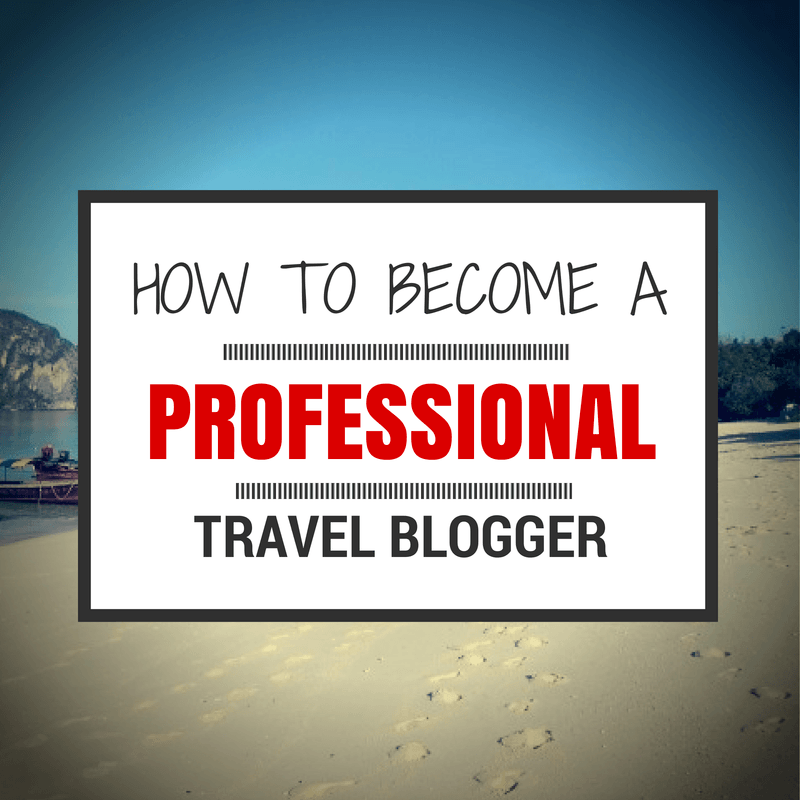Exactly 10,731,924 people (give or take a few) have started a travel blog. Of those, maybe (just my best guess here), a couple thousand are professional travel blogs. Admittedly, I may be a little off on the numbers, but the point is this: there’s a whack-load of travel blogs out there, both professional and not.
We started The Barefoot Nomad back in 2008 (which is roughly equivalent to the mid-Jurassic Period in Internet years). For a few years we chugged along, writing occasional updates on our travels for the handful of people who read them (Hi Mom!)
Somewhere along the way, more and more people started reading our stuff, and we decided to make a business out of it, and today we’re more of a digital magazine.
Straight up, it’s been a rocky road at times, and I think we’ve survived largely due to our love of what we do, sheer stubbornness and working hard to be seen as professionals. There’s a world of competition out there (remember those 10,731,924 travel blogs?), and you really need to have a solid, professional image to make you stand out.
This post is written for travel bloggers who are looking for advice on how to become a professional travel blogger. In it we’re going to talk about:
- how to take the next step to become a professional travel blogger (and how to up your game if you already consider yourself a professional travel blogger)
- how to make money as a travel blogger
First, though, what makes a travel blogger professional?
We could spend a lot of time arguing the fine points of this, but a professional in any field is someone who gets paid, while someone doing the same thing as a hobbyist does not.
So, at least for our purpose today, a professional travel blogger gets paid for his or her work.
Making money as a travel blogger
There are a lot of different ways to make money as a blogger. Some of the more common ways are placing ads on your site, using affiliate links (where you get paid a percentage of any products you sell) and working with tourism boards, hotels and travel companies to promote their destination or product.
In this post, we’re going to focus on working with sponsors, travel brands and tourism boards.
As of a few years ago, there were really no companies that worked specifically to connect travel bloggers to travel brands and tourism organizations. Most companies that connect bloggers to brands focus on mommy blogs or technology. They occasionally have travel-related campaigns, but they’re few and far between.
Many bloggers contact tourism boards (often called DMOs or Destination Marketing Organizations) and travel brands directly. We’ve done this in the past, and have forged some great relationships, but it’s also a time consuming process.
Personally, we like to do a mixture of working with influencer networks, and working with brands and tourism organizations directly.
Whether you’re working with a company or contacting tourism boards and brands directly, you’ll need to show that you’re serious about what you do, and set yourself apart from other bloggers. Here are some tips and skills that we think are essential for a professional travel blogger.
Tips and skills for professional travel bloggers
Media Kit
A media kit is like a resume for your blog. It’s a great way to introduce your blog to potential sponsors and advertisers. You can create a pretty digital media kit using something like Canva.
You can also buy some beautiful media kit templates on Etsy.
Check out these excellent sample media kits from travel bloggers at Travel with Bender, Velvet Escape, Travels of Adam and TravelDudes.
Tip: Make sure that you include your media kit (or at least mention that advertisers can contact you to see your media kit) in your Advertising/Work with Us page on your blog.
Join Organizations
Joining an organization can be a way of giving yourself some credibility as a professional. While there are others, the Society of American Travel Writers (SATW) is well known in the industry.
Go to Conferences
Conferences are a fantastic way to get your name known as a professional travel blogger, connect with sponsors and advertisers, and also to get hands on education on many blogging topics.
TBEX is the biggest travel blogging conference out there right now, and usually holds both a North American and a European conference every year.
Learn to Write a Pitch Letter
Well, these days, it’s almost always a pitch email, and not a letter, but the idea’s the same. You’re probably going to be contacting a potential advertiser or tourism board at some point, so it’s a great idea to have your pitch well honed. You’ll likely even use a version of your pitch letter when you’re working with a company that connects you to travel brands and tourism boards.
There are literally dozens of books about writing pitches out there, so I’m not going to go into details, except for one crucial tip: always make your pitch about what you can do for the advertiser. No one cares if you want a sponsored trip or free stay; they care how working with you and publishing on your blog can help their business.
Here are a few good resources to get you started:
- How do I go about pitching? in How to Work with Tourism Boards by Dangerous Business
- How to Pitch a Travel Magazine by Brendan van Son
- 5 Reasons Your Sponsorship Pitch Failed by Katie Hammel of Viator
Get your name out there
I am not a natural marketer, so this one’s always been tough for me. Here are a couple of ways I’ve found to help you get your name out there as a professional travel blogger.
Submit your name to travel blogging lists. These can be lists of travel bloggers in your country, top 100 blogs or for your specific niche (e.g. food or over 50 travel). You’ll have to do a bit of Googling on this one, and keep your eyes open, but when an opportunity arises, throw your hat in the ring. You miss 100% of the shots you don’t take, right? (Many thanks to my fellow Canuck Wayne Gretzky for that one).
Sign up for HARO (Help a Reporter Out). Reporters (and brands) use HARO to find expert sources for their stories. Keep an eye on the requests, and you just might find yourself quoted in a news story or magazine. The basic membership is free, and you’ll get emails in your inbox at a dizzying frequency.
Give sponsors a way to contact you
Make sure that you have a way for potential partners to contact you on your blog, whether that’s a contact form or masked email address (e.g., admin at thebarefootnomad dot com). (You mask the email address to prevent spammer bots from finding your email and putting you on spam lists).
Conduct yourself with professionalism
If it walks like a duck, and talks like a duck, chances are it’s a duck. If you act like a professional, word will get out, and people will want to work with you. Return emails and phone calls on time. Deliver (actually, over deliver) on any promises you make. Do all the things you expect a professional would do, and then do a little bit more.
Have we missed anything? Let us know in the comments below. We’d love to hear your take on what it takes to be a professional travel blogger.







